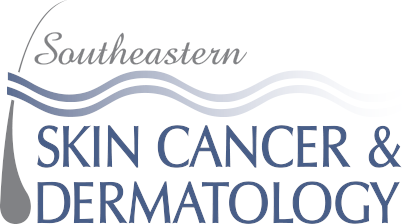Rosacea
Home » Dermatology » Rosacea
Rosacea (pronounced roh-ZAY-sha)
is a common but poorly understood disorder of the facial skin that is estimated to affect well over 16 million Americans — and most of them don’t know it. In fact, while rosacea is becoming increasingly widespread as the populous baby boom generation enters the most susceptible ages, a Gallup survey found that 78 percent of Americans have no knowledge of this condition, including how to recognize it and what to do about it.
Rosacea cannot be cured, but it can be controlled. Because of its red-faced, acne-like effects on personal appearance, however, it can cause significant psychological, social and occupational problems if left untreated. In surveys by the National Rosacea Society, more than 76 percent of rosacea patients said their condition had lowered their self-confidence and self-esteem, and 41 percent reported that it had caused them to avoid public contact or cancel social engagements. Among rosacea patients with severe symptoms, 88 percent said the disorder had adversely affected their professional interactions, and 51 percent said they had even missed work because of their condition.
While the cause of rosacea is unknown and there is no cure, today medical help is available that can control the signs and symptoms of this potentially life-disruptive disorder. Any one of the following warning signs is a signal to see a dermatologist or other knowledgeable physician for diagnosis and appropriate treatment before the signs and symptoms become increasingly severe: redness on the cheeks, nose, chin or forehead; small visible blood vessels on the face; bumps or pimples on the face; watery or irritated eyes.
How do dermatologists treat rosacea?
To treat rosacea, a dermatologist first finds all of the patient’s signs and symptoms of rosacea. This is crucial because different signs and symptoms need different treatment. Treatments for the skin includes medicine that is applied to the rosacea, sunscreen (wearing it every day can help prevent flare-ups), an emollient to help repair the skin, lasers and other light treatments, or antibiotics (applied to the skin or pills). When rosacea affects the eyes, a dermatologist may give you instructions for washing the eyelids several times a day and a prescription for eye medicine or pills.
Outcome
There is no cure for rosacea. People often have rosacea for years with improvements and flares. In one study, researchers asked 48 people about their rosacea. More than half (52%) had rosacea that came and went. These people had had rosacea for an average of 13 years. The rest of the people (48%) had seen their rosacea clear, reporting an average of 9 years. Treatment can prevent the rosacea from getting worse. Treatment also can reduce the acne-like breakouts, redness, and the number of flare-ups. To get the best results, people with rosacea also should learn what triggers their rosacea, try to avoid these triggers, and follow a rosacea skin-care plan.
Tips
When treatment begins at the first sign of rosacea, treatment often controls the disease. Control means that you are less likely to see the rosacea or feel the symptoms such as burning and itching.
Treating rosacea early also can stop it from getting worse. Rosacea can be more difficult to treat later in the disease process if it gets worse.
Rosacea may not go away on its own and tends to worsen over time.
Different types of rosacea require different types of treatment.
Some treatments available without a prescription can make rosacea worse because they contain ingredients that can cause rosacea to flare.
Learn what triggers your rosacea. Many everyday things can cause rosacea to flare, including sunlight, stress, and many foods and beverages.
What causes one person’s rosacea to flare may not trigger a flare-up for another person. Avoiding these triggers can reduce flare-ups.
Follow a rosacea skin-care plan. Skin care plays an important role in keeping rosacea under control. Many skin care products are too harsh so consult with your dermatologist.
Support Group
National Rosacea Society
American Acne & Rosacea Society





